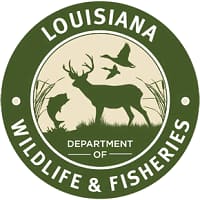Louisiana Shrimp Season To Close in Portions of State Inside and Outside Waters

Today, Louisiana Wildlife and Fisheries Secretary Robert Barham announced a closure of the fall shrimp season in state inside waters west of the Mississippi River and in a portion of state outside waters effective Wednesday, December 18, 2013 at official sunset.
Specifically, those waters that will close to shrimping include:
- The portion of state inside waters from the eastern shore of South Pass of the Mississippi River westward to the Louisiana/Texas state line
- The portion of state outside waters extending a distance of 3 nautical miles seaward of the inside/outside shrimp line from the Atchafalaya River Ship Channel at Eugene Island as delineated by the Channel red buoy line westward to Freshwater Bayou Canal at -92 degrees 18 minutes 33 seconds west longitude
The following state waters will remain open to shrimping until further notice:
- The portion of state inside waters east of the eastern shore of South Pass of the Mississippi River eastward to the Louisiana/Mississippi state line.
- All state outside waters east of the Atchafalaya River Ship Channel at Eugene Island as delineated by the Channel red buoy line as well as all state outside waters west of the western shore of Freshwater Bayou Canal.
- All fishery jurisdiction waters claimed by the state beyond the three nautical mile closure zone.
Existing data does not currently support shrimping closures in additional state inside and outside waters. However, historic data suggest additional closures may be needed in the near future and the Department of Wildlife and Fisheries will continue monitoring shrimp populations in these waters.
Regulations state that the possession count on saltwater, white shrimp shall average no more than 100 (whole shrimp) count per pound, with the exception of October 15 through the third Monday in December, when there is no minimum count size.
The Louisiana Wildlife and Fisheries Commission provided LDWF Secretary Robert Barham with authority to close both the fall inshore shrimp season and shrimping in the state’s territorial sea when biological and technical data indicate the need. Recent sampling conducted by the LDWF Fisheries biologists indicates that average white shrimp size in those waters to be closed is smaller than the minimum possession size limit. This action, which characteristically takes place at this time of year, is designed to protect small, white shrimp and provide opportunity for these populations to over-winter and grow to larger, more marketable sizes.
For a map detailing today’s actions click here.
Louisiana continues to lead the country in shrimp landings. In 2012, approximately 5,566 licensed Louisiana commercial shrimpers landed 100.3 million pounds of shrimp (all species combined/heads-on weight) that had a dockside value of $145 million.
The Department of Wildlife and Fisheries is charged with managing and protecting Louisiana’s abundant natural resources. For more information, visit us at www.wlf.louisiana.gov on Facebook at www.facebook.com/ldwffbor follow us on Twitter @LDWF.
For more information, contact Martin Bourgeois (985) 594-4130 mbourgeois@wlf.la.gov. For press inquiries, contact Ashley Roth at aroth@wlf.la.gov or (504) 286 -4162.

